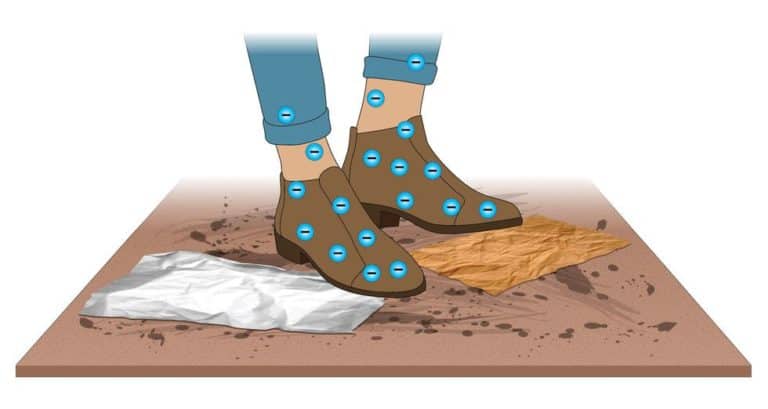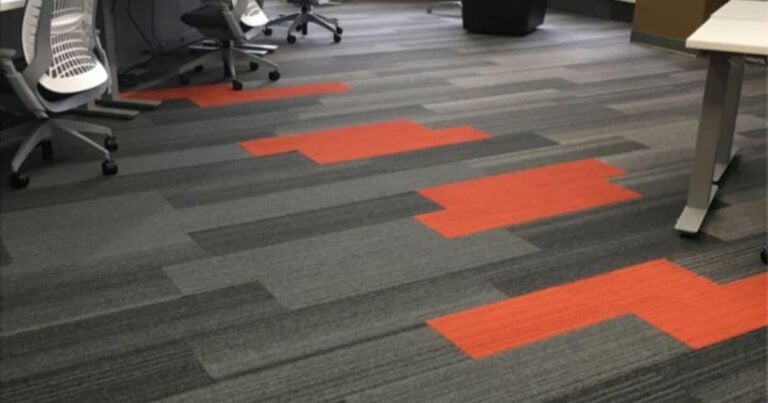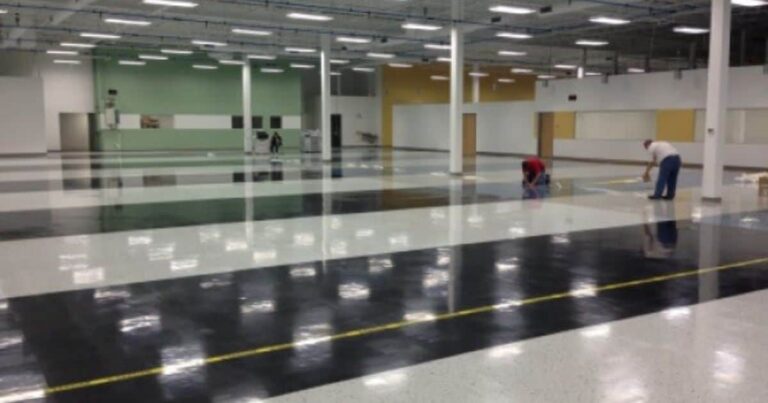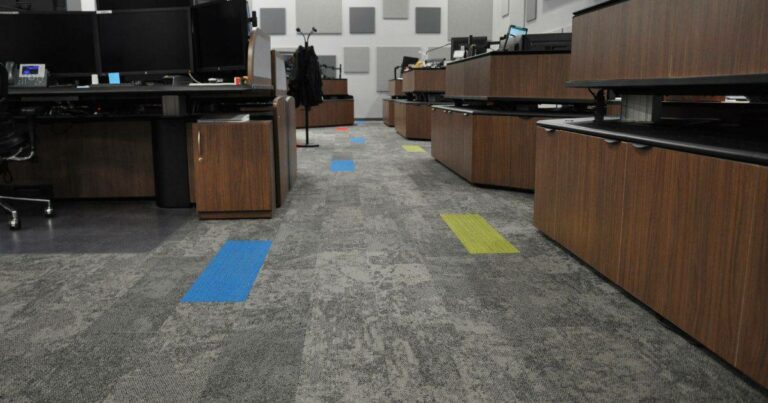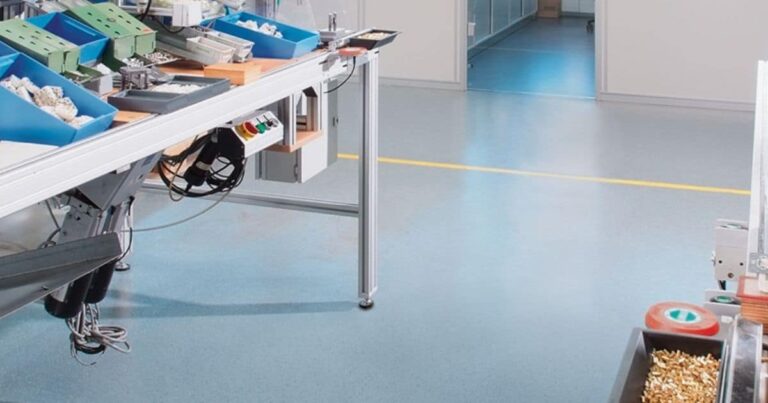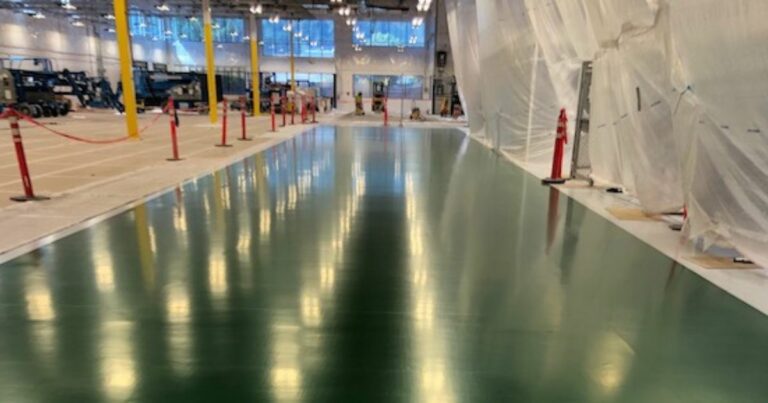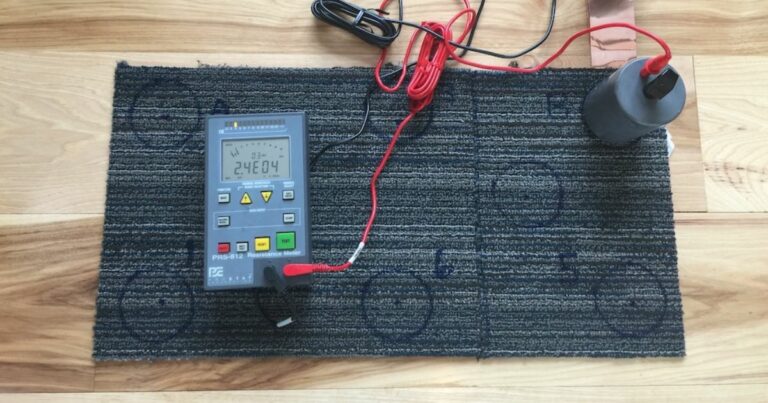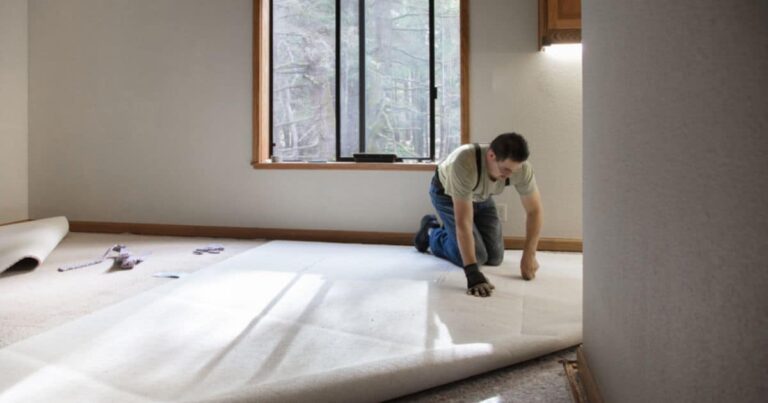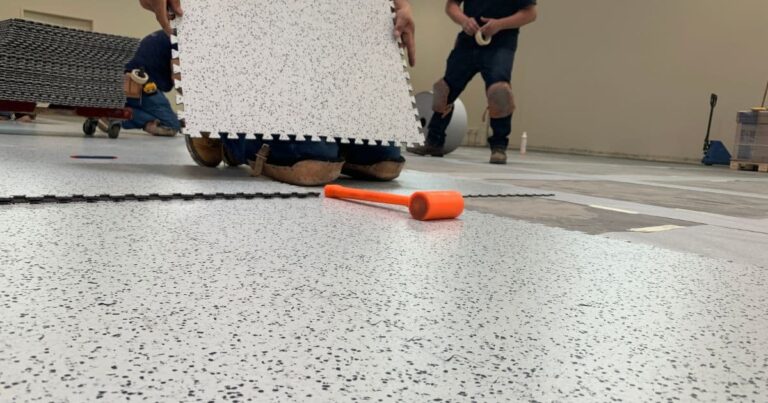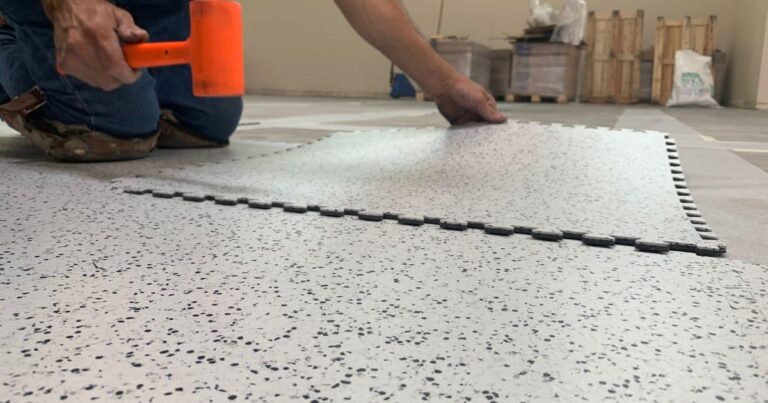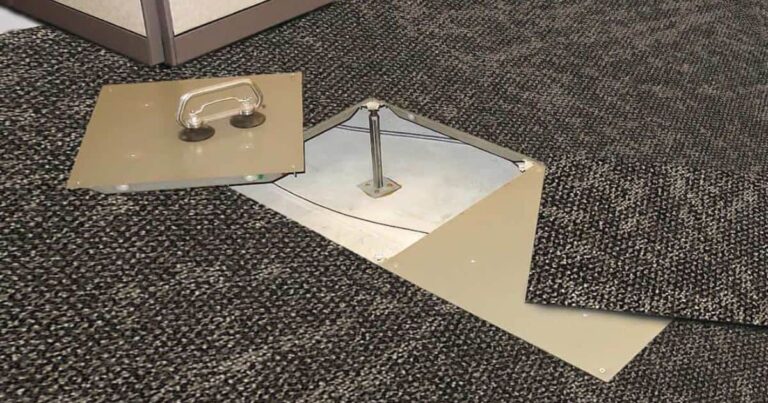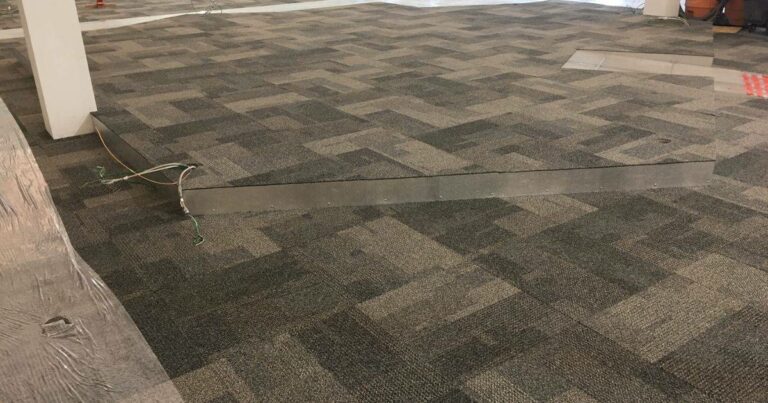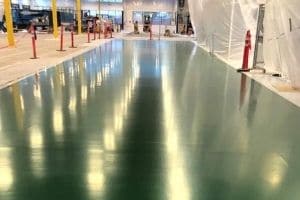FAQ: Could a conductive floor endanger people working around operational energized equipment?
In the unlikely event of a stray voltage or short circuit in electrified equipment, conductive floors expose workers to more electrical current than static-dissipative flooring. For this reason, standards for telecommunications and flight-control spaces, where personnel may come into contact with electrified equipment, prohibit the use of conductive flooring.
In most cases, particularly with ESD carpet, conductive materials offer no static-control advantage over static-dissipative flooring as far as inhibiting charges on people walking on the floor. In August, 2011, an independent lab study compared the charge-generation performance of static-dissipative carpet tile against conductive carpet tile. The results were nearly identical with the slight advantage in favor of static-dissipative carpet. As there are no performance benefits, there’s no incentive to risk liability or compromise the safety by sidestepping established grounding standards, such as ATIS 0600321, FAA 019f, and Motorola R56.


These videos may provide further understanding on the subject.
Static-Control Flooring and Electrical Resistance Testing
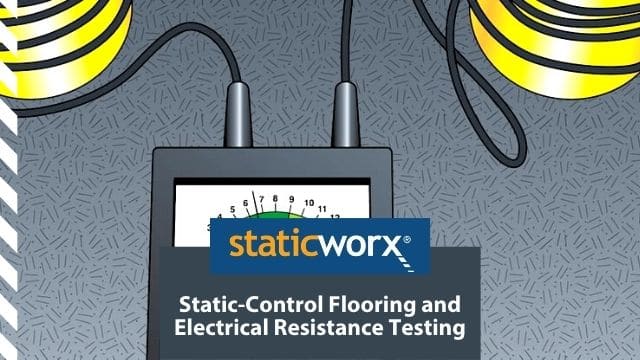
The Case Against Highly Conductive Flooring (NFPA 99)
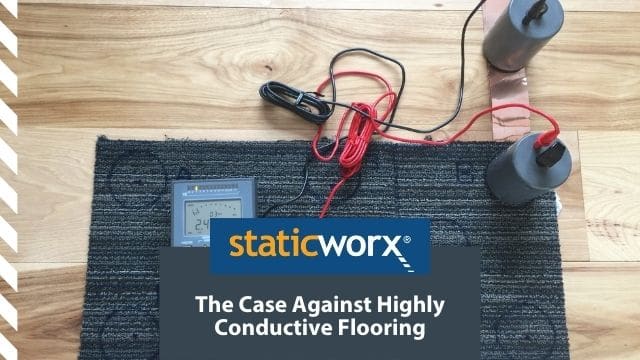
More FAQs
Learning Center Articles
- ESD Basics
- Installation & Maintenance
- Selecting & Specifying an ESD Floor
- Technical Information
- 7 Common Mistakes Selecting an ESD floor
- A Guide to ESD Flooring Selection
- Avoid Costly Failures: What You Need to Know When Specifying ESD Flooring
- Choosing ESD Flooring for:
- ESD Footwear: What Is It and When Is It Necessary?
- ESD Footwear for Electronics Manufacturing and Handling Applications
- Facility Managers’ Guide to Selecting ESD Flooring
- The Need for Due Diligence in Specifying Static-Free Flooring
- Standard of Care for Specifying Floors in Mission-Critical Spaces
- Understanding the Hidden Costs of ESD Flooring

StaticWorx high-performance static-control floors protect electronic components, explosives, and high-speed computers from damage caused by static electricity. ESD flooring is part of a system. Choices should always be based on objective, researched evidence. When you partner with us, we look at all possible items that may need to integrate with the floor, and, focusing on your goals and objectives, help you find the right floor for your application.







